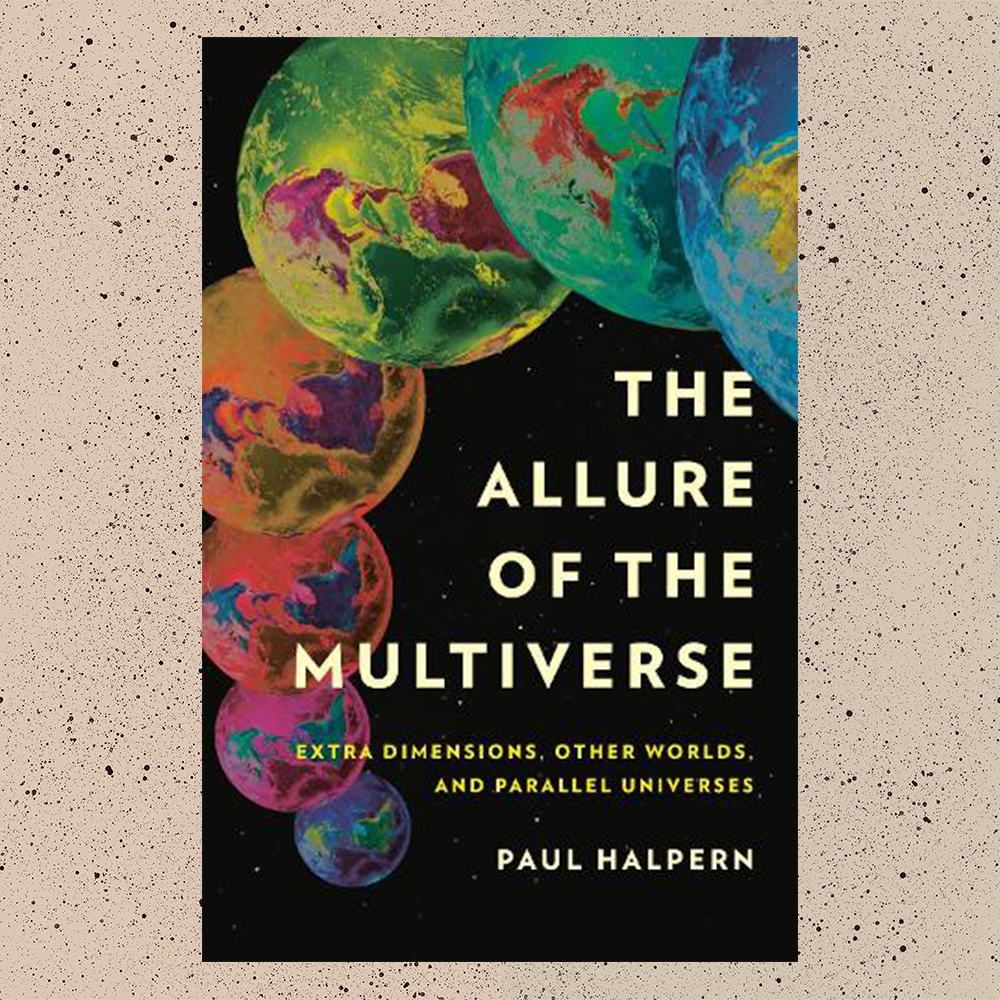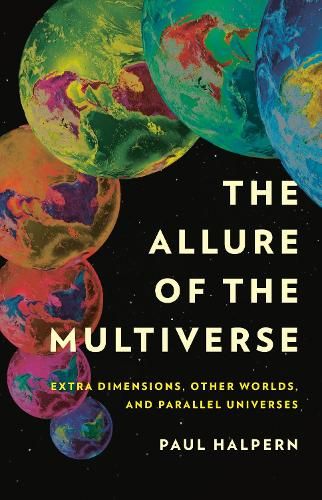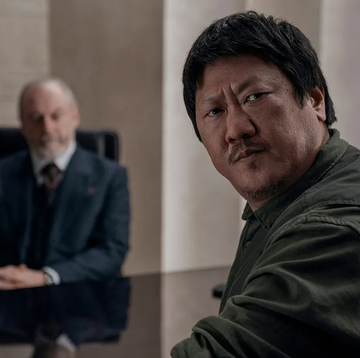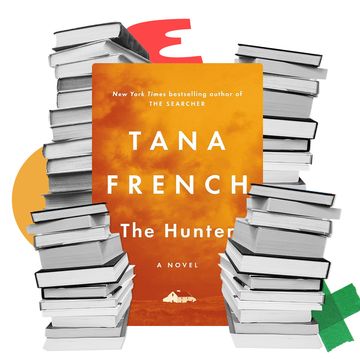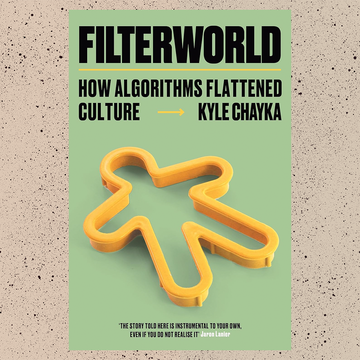After the monumental success of Avengers: Endgame, I remember wondering, like many people, what Marvel could possibly do to follow up such a cultural juggernaut. How could they raise the stakes or stage bigger battles? What else was left to explore?
Then, in the trailer for Spiderman: Far From Home, after Tom Holland’s Peter Parker learns from Nick Fury that Quentin Beck is “from Earth, just not ours,” Peter asks with nervous excitement, “You’re saying there’s a multiverse?”
Yes, Peter, there is—well, I’m not sure if there are actually parallel worlds adjacent to ours, but in terms of contemporary storytelling? There are multiverses everywhere. There is, if you will, a multiverse of multiverses. To name just a few, there’s the Academy Award-sweeping film Everything Everywhere All at Once, the popular sci-fi cartoon Rick & Morty, Amazon’s Philip K. Dick adaptation of The Man in the High Castle, Apple’s space race alternate history For All Mankind, the sprawling DC and Marvel franchises, and even onward to novels like Kate Atkinson’s Life After Life, Lauren Beukes’s Bridge, Matt Haig’s The Midnight Library, and Iain Pears’ Arcadia. In recent years, tales of adjacent realms and alternate timelines have become more and more pervasive in popular culture.
Of course, stories involving alternate timelines, what-ifs, and speculative histories are nothing new (in fact, as we’ll see, they long predate the scientific theories that explain them). What, after all, is Dickens’s Ghost of Christmas Future but a glimpse into a multiverse? Because Scrooge heeded the three ghosts’ warnings, the vision shown to him by that ghost wouldn’t come to pass, meaning that this dark timeline is either an illusion conjured by the spirit or an alternate version of Scrooge’s life. The same can be said of It’s a Wonderful Life, the multiple finales to the film adaptation of Clue, the Gwyneth Paltrow romance Sliding Doors (and its precursor, the Polish film Blind Chance), and the ‘90s cult show Sliders.
But the cluster of multiverse narratives of the past decade have not just technically been multiverse stories. They’ve been explicitly multiverse stories—as in, they employ the scientific language that originated with the theory. They are directly inspired by the Many Worlds Interpretation, not merely tapping into the kinds of emotional desires that the multiverse offers. For God’s sake, Marvel’s recent spate of ten films, eleven shows, and two shorts (and many more on the way) are collectively referred to as the Multiverse Saga. Even more significant, though, is how, much like time travel, the multiverse as a storytelling device began as a nifty concept and eventually deepened into a fruitful (and quickly overused) tool to explore things deeper and closer to home. What began as an esoteric theory and a heady narrative device has become as mainstream and emotionally resonant as any cinematic trope.
But as soon as an idea enters the zeitgeist and then the upper echelons of corporate IP, it gets flattened by the cynical and crass exploitation of pandering and profit hunting. The seven Oscars awarded to Everything Everywhere All at Once probably mark the apex of our current multiverse saga, now that the DC and Marvel films lashed to this subject have become increasingly unsuccessful, bombing at the box office and engendering some heavy animosity from fans. The multiverse has gone from an obscure theory to a sci-fi trope to a popular mainstream conceit to an underwhelming excuse for fan service of the crassest kind.
Paul Halpern’s new book, The Allure of the Multiverse: Extra Dimensions, Other Worlds, and Parallel Universes, regales us with the history of the concept—from Pythagorean cosmology to quantum mechanics—in scientific terms. With his insight and expertise, perhaps we can illuminate the social side of the story. Why has the multiverse emerged so ubiquitously in the past decade? What mode of contemporary life does it capture? Why did it catch on so infectiously? And why does it seem to be crashing just as dramatically?
The multiverse as a theoretical concept fittingly has numerous origins. Science—particularly high-level physics—relies on brilliant thinkers intertwining each other’s ideas into a cosmic braid of impenetrable complexity. As The Allure of the Multiverse makes clear, radical and counterintuitive theories like the multiverse—also called the Many Worlds Interpretation, parallel realities, etc.—arise out of a series of breakthroughs, insights, discoveries, and audacious leaps of logic. It typifies, in many ways, the highest level of human thought.
But the multiverse as a metaphoric concept has been nestled inside our ponderous and rueful psychology for as long as humanity has possessed a psychology. Our unique self-awareness, responsible for our physically fragile species’ global dominance, also causes our unique melancholy: we know that we have only one life. And what a precious life it is. The more exposure a person has to the bewildering and intricate enormity of existence, the more one is keenly attuned to the infinitesimal capriciousness of one’s place in it. As Richard Dawkins elegantly put it in the opening of Unweaving the Rainbow:
We are going to die, and that makes us the lucky ones. Most people are never going to die because they are never going to be born. The potential people who could have been here in my place but who will in fact never see the light of day outnumber the sand grains of Arabia. Certainly those unborn ghosts include greater poets than Keats, scientists greater than Newton. We know this because the set of possible people allowed by our DNA so massively exceeds the set of actual people. In the teeth of these stupefying odds it is you and I, in our ordinariness, that are here.
Imagine, then, knowing how much it has taken for us to be born, and how easily it may not have happened. The pressure this awareness places on our one precious life! It is miraculous to even draw breath at all—now what are we going to do with this gift?
Mostly, not a whole lot. Remember, it is you and I, in our ordinariness, that are here. We can’t all be winners, kid.
And so we’re left, at the end of our days, with regrets and musings about alternative paths, convinced our benighted fate was not inevitable, but rather the result of a misstep, a wrong door, a left instead of a right. Who might we have been? What other choices might we have made? Could we have lived a better, more fulfilling life? Or might our circumstances have been worse? The hypothetical versions of ourselves we invent in our minds may not outnumber the sand grains of Arabia, but maybe, like, Cocoa Beach?
The multiverse, then, in addition to attesting to human ingenuity, also represents the most fundamental aspect of the human condition. The multiverse lives in the depths of our minds and our hearts.
In the preface to the revised edition of his 1969 novel The Eternal Champion, legendary sci-fi author Michael Moorcock claims to have coined the word multiverse in his first novel, The Sundered Worlds (1965). He didn’t. That distinction belongs to William James, the philosopher, psychologist, and brother to novelist Henry James, who invented the term to characterise the ambivalence of existence. “A moral multiverse,” he wrote in his 1895 essay “Is Life Worth Living?”, “and not a moral universe.” What Moorcock did was provide the word with the meaning we’ve become so familiar with: “an infinite number of slightly different versions of reality,” as he puts it.
Before Moorcock’s influential usage, the theory languished in the physics world under many different names. Attempts by sci-fi writers to christen the multiverse were similarly unsuccessful, though not always because their entries were inferior. Take Philip Jose Farmer’s The Maker of Universes (1965), published the same year as Moorcock’s debut, in which a man uses a magic horn to travel between “tiers,” or “world upon world piled upon each other like the landings of a sky-piercing mountain.” The novel’s front cover declares it “the many-leveled cosmos,” which is a lovely phrase I quite enjoy. As wonderful as it is, it’s not quite portable enough. Perhaps in another universe…
The contexts for the two origins of the word “multiverse” are worth a brief detour, as they afford some convenient insights into the heart of the concept itself. The subject of the essay in which William James coined the word multiverse was optimism and pessimism. Optimism here does not refer to a generally positive outlook, as we mean today, but rather a philosophy championed by Gottfried Wilhelm Leibniz in his 1710 work Theodicy and popularised by Alexander Pope’s Essay on Man. This optimism addresses the problem of evil in theology by arguing that our reality has been chosen by God from a selection of “all possible worlds.” Our reality may contain evil and sin and suffering, but according to Leibniz, realities without the bad stuff are not any better. Ours is, in an infamous phrase, “the best of all possible worlds.” This is an early example of the multiverse, albeit one that exists only in the mind of God. The notion of alternate realms can be found all over philosophical and theological thought.
On the other hand, when Moorcock discusses his use of the multiverse in his novels, he waxes giddy about its storytelling utility. He can narratively “deal in non-linear terms with versions of perception” and create “simplified models of ideal worlds (for which large numbers of people in Western society yearn so nostalgically),” allowing him to consider “by what particular injustices they might be maintained.” Right away, Moorcock saw the treasure trove of metaphoric largesse the multiverse granted a novelist—how the vast expanse of the cosmos could be used to explore the innermost depths of the human soul.
Comic books, those precocious nieces and nephews of genre fiction, similarly grasped the potential of the multiverse. Consider, for instance, the origin of DC’s Barry Allen, a “police scientist” who becomes the second iteration of the Flash (the first being Jay Garrick from the 1940s comics). Barry Allen’s introduction occurred in Showcase #4 from October 1956; in it, Barry is shown reading a comic book featuring his idol, the Jay Garrick Flash (referred to as the Golden Age Flash). So when he’s quite coincidentally struck by lightning and also doused with chemicals, gaining superhuman speed, he names himself after his hero. DC cleverly incorporated their earlier era into their new one. But in 1961, Garner Fox wrote an issue of The Flash called “Flash of Two Worlds.” In his wonderfully informative book The Physics of Superheroes, James Kakalios explores this story as an introduction to quantum mechanics; he writes, “it was revealed that the Silver Age Flash [Barry] and the Golden Age Flash both existed, but on parallel Earths, separated by a ‘vibrational barrier.’” The explanation is that Barry “accidentally vibrated at superspeed at the exact frequency necessary to cross over” to what they refer to as Earth-2.
“Flash of Two Worlds” was a hit, and as companies are wont to do, DC repeated the formula over and over, increasing the number of Earths each time, now with Earth-3, Earth-S, Earth-X, and Earth-Prime (our reality), culminating finally in 1985’s massive crossover “Crisis on Infinite Earths,” which, like Moorcock, emphasised the utility of the multiverse for the practicalities of narrative. The major comic event was orchestrated, as Kakalios puts it, to “normalize the multiverse,” a “vast housecleaning of continuity… to weed out poor sellers from many of the less-popular worlds and bring all the heroes from the best-selling titles together on one Earth.” Executive editor Dick Giordano wrote a memo listing the fallen characters (which included Barry Allen), commanding, mafioso-like, “they should never be seen again, nor should they be referred to in story.”
What unites DC’s coldblooded housecleaning and Moorcock’s pragmatism is their sense of testing out the utility of multiversal plots. Each had found a new mode of narrative and were keen to stretch its limitations. But in the scientific community, the theory of the multiverse remained a subject of much derision; it wouldn’t become an accepted mainstream notion until the ‘90s. Thus these stories, which incorporated a version of the actual physics concept rather than merely a hypothetical, had niche audiences.
For all their innovations with the multiverse, from coining the term to crafting it into novels and expanding the world of superheroes, none of these figures fully realized the notion of infinite realities as an avenue to richly scrutinize the pitiful and helpless exercise of wondering what might have been. If you wanted to explore the emotional possibilities of the multiverse before the 21st century, you did so without mention of any quantum mechanics or general relativity. Instead, you severed the idea from any esoteric mumbo-jumbo that might catapult your novel or film into nerdy territory, because anything nerdy, for a long time, wasn’t considered emotionally evocative or even representative of typical human experience. Nerds, like the multiverse, existed on the fringes.
The multiverse was born for me when, as an early twentysomething reading Sylvia Plath’s The Bell Jar, I was startled by the famous passage about the fig tree. Esther, the protagonist, a 19-year-old aspiring writer, contemplates the innumerable choices that lay before her by comparing them to figs falling from a tree she’s sitting under, each one representing “a wonderful future [that] beckoned and winked.” “One fig,” she writes, “was a husband and a happy home and children, and another fig was a famous poet and another fig was a brilliant professor.” Other figs are exotic places she could travel, lovers she might take, ambitions she may pursue. And while this seems like a particularly envious position for a young kid to be in (each of her hypotheticals is a good scenario), Esther is instead filled with prophetic fear:
I saw myself sitting in the crotch of this fig tree, starving to death, just because I couldn't make up my mind which of the figs I would choose. I wanted each and every one of them, but choosing one meant losing all the rest, and, as I sat there, unable to decide, the figs began to wrinkle and go black, and, one by one, they plopped to the ground at my feet.
As a young adult, I couldn’t have understood the pangs of remorse given off by older people looking back on an imperfect life, but I could absolutely fathom the frightening prospect of future remorse. Plath’s evocation of paralysing choices and the many lives those choices might lead to struck a chord with me. For the first time, I grasped the insane caprice of the human condition: how every YES inherently implies a NO to everything else. As the priest says in Charlie Kaufman’s film Synecdoche, New York, “There are a million little strings attached to every choice you make; you can destroy your life every time you choose.”
While we’re on the subject of Synecdoche, New York, isn’t the central conceit of that film that the obsessive recreation of life into art leads to a concerning inability to tell the difference between the two? When we make art, don’t we effectively create multiverses in which we make a different decision or kiss a different person or move to a different city or pursue another career?
Art allows us a peek into the multiverse. Take poetry, for example—it abounds with the mournful, melancholic, and mopey among us pondering the possibilities of passed-over paths. A.E. Housman laments “the land of lost content” made up of “blue remembered hills” in a lyric in A Shropshire Lad (1896), which employs landscapes as its metaphorical terrain, as does Robert Frost’s infamous poem “The Road Not Taken,” from Mountain Interval (1916) twenty years later. Neither Housman’s blue hills nor Frost’s forking roads feature any suppositions about their might-have-beens—only the utterly human tragedy of regret, our tendency to agonize over our decisions and blame the caprice of causality for all of our problems. The multiverse, in its most basic sense, is about our perpetual unhappiness.
This is why the multiverse is an immensely appealing device in fiction, but also why it’s ultimately unsatisfactory as a means of narrative self-exploration. The multiverse is too multi. Human beings can’t accommodate notions like infinity, and moreover, our lives don’t hinge on endless possibilities, but rather on starker binaries like Frost’s splitting roads. Our regrets are small, in the grand scheme of things, and any attempt to extend our regrets into cosmic proportions tilts the realm of human meaning somewhere bewilderingly distant from what we understand.
This accounts for why an otherwise uninspired romantic comedy that was a minor hit in 1998 can coin a phrase that’s persisted in culture for much longer than any of the details of the film itself. Sliding Doors articulated and named humanity’s relationship to the multiverse. We obsess over missed connections, either/or scenarios, door #1 or #2, yes or no, stay or go. Tales of two outcomes of the same moment entice us, but more options added to the menu tend to overwhelm us emotionally, leaving only our intellectual side intact. Ricky & Morty succeeds because it aims at our brains, reveling in cleverness. But a version of Sliding Doors with three, four, ten, Gwyneth Paltrows would undercut the personal stakes for us.
Multiverse stories can, in fact, diminish their own narrative stakes, particularly in franchises. Corporate studios see the multiverse as an opportunity to expand the scope of their IP, so they bring in characters from past cinematic universes, as in Dr. Strange and the Multiverse of Madness, The Flash, and Spider-Man: No Way Home. In this last example, the Spider-Man films featuring Toby Maguire and Andrew Garfield are now MCU canon. As film critic Clarisse Loughrey observed, the multiverse, for major studios, doesn’t lie in its “creative potential,” but “its cameos.”
More significantly: an endless series of universes means that any character’s death is impermanent, that all dire circumstances are reparable, and that all possibilities tend to equate to no possibilities. This last idea can be summarized by a line from a superhero movie: the recurring theme of Brad Bird’s The Incredibles (2004) is if everyone is special, then specialness loses its specialness and thus no one is special. Specialness is defined by contrast to regularity, just as the weight of our life choices is tied to the limited amount of alternatives we perceive. Of course it’s true that at any moment, we can radically change our lives; this means that for any given scenario in which we see only two options, there are in truth many paths we could take. Gwyneth Paltrow could have been hit by the train, too. Our minds ignore these possibilities because we aren’t fully aware of them (who, after all, thinks, Well, I could have turned left at that light or I could have done donuts in the intersection until the cops showed?), just as we aren’t conscious of the millions of coincidences that don’t happen, only the rare ones that do.
What we’re less inclined to enjoy are multiverses in which there are so many scenarios that we lose our cosmic footing. Ironically, the MCU’s move to the multiverse—which seemed like such an inspired way to up the ante from Thanos’s threat to half of one universe to a vast war involving infinite ones—had the opposite effect: it flattened the stakes, making them more representative of corporate mergers than insightful explorations of personal potential.
In physics, the multiverse is a fascinating concept that lends theoretical support to other unexplained phenomena of existence. But in our daily lives, a multiverse is mostly meaningless. We cannot consider every possibility, or even many of them; indeed, keeping mental tabs on a single branch (which itself branches again and again) is pretty much impossible. If the multiverse were proven to be real, our natural proclivity for minor regrets would render the world more suited to the scope of our tiny, insignificant lives, which are also—to us—the most important in the universe.
Theories explain; metaphors reflect.
The multiverse, as a theory, emerged because of some as-yet-unexplained problems resolving Einstein’s general relativity with the mysteries of quantum mechanics, not because our hearts are filled with longing and regret. It seeks to account for certain aspects of reality. Whatever emotional implications it also evokes are beside the point. Relativity, quantum physics, infinities—these are beyond our capacities.
But the chance to investigate the many ways our lives could have gone by vivisecting seemingly arbitrary decisions? That is as appealing to people as pondering the ability to stop time, to fly, or to make the right choice in the first place. But these multiverse fictions are not legitimate attempts to explain our current state. Instead, they represent our feelings about our current state. When you’re at your most joyful, you don’t waste time relitigating past choices—unless it’s to marvel over how lucky you’ve been. Rather, you bathe in the present moment, content that in all the infinite possibilities of this vast, eternal, and relentlessly enigmatic universe, that out of the millions of strings attached to every action, that in the teeth of such stupefying odds, you’ve managed to eke out a sliver of life that gives you purpose and pleasure. Those mired in miserable circumstances are much more likely to sift through their timelines to locate potential missteps. The multiverse, then, explains more about our self-regard than it does the vagaries of light and gravity and particles and waves.
People are filled with regret and weighted by creativity. So we can conjure up invented selves with a magician’s ease, but only for so long. Very quickly our ideas run their course, mostly because we aren’t personally invested in worlds where we’re made of paint or have hot dog fingers or are controlled by the Nazis. These are too far-fetched to be anything but thought experiments, emotionally inert and pragmatically irrelevant.
But give us a missed train or an unrequited love or an untaken journey, and we’ll dedicate much of our lives to concocting stories in which we got things right, found our passions, and chased our dreams, as if it were possible for us to say, as E.E. Cummings once wrote, “there’s a hell / of a good universe next door; lets go.”

Jonathan Russell Clark's writing has appeared in the New York Times, the LA Times, the Boston Globe, and the San Francisco Chronicle.
